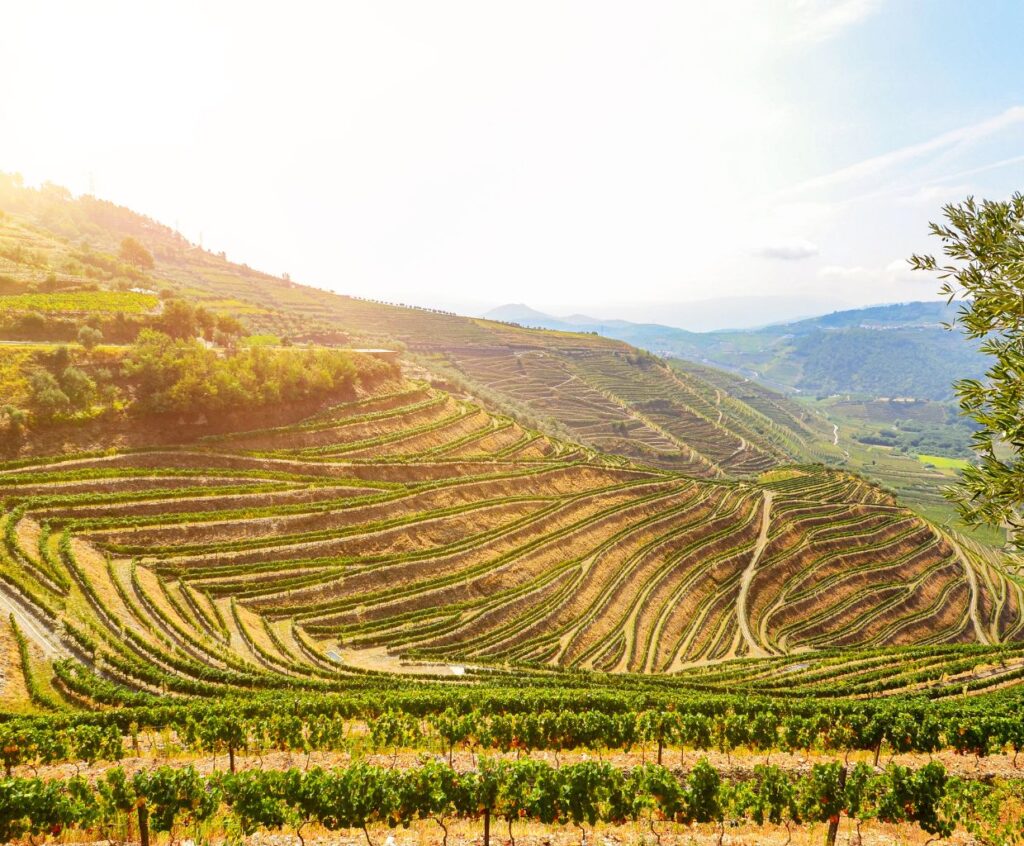Port Wine: A Flavorful Journey into Portugal’s Rich Winemaking Heritage
Port wine, also known as Porto or simply Port, is a sweet, fortified wine from the Douro Valley in northern Portugal.
It is one of the country’s most famous exports and holds a special place in the hearts of wine enthusiasts worldwide.
Where is it From?
Port wine is exclusively produced in the Douro Valley, a picturesque wine region in northern Portugal. The Douro Valley is a UNESCO World Heritage site known for its steep, terraced vineyards and breathtaking landscapes.
The region’s unique microclimate, with hot summers and cold winters, provides ideal conditions for growing the grapes used in producing Port wine.
About Wine
Wine is a beloved beverage that has been enjoyed for centuries. It is made by fermenting the juice of grapes, which transforms the sugars into alcohol. The winemaking process involves harvesting the grapes, crushing them to extract the juice, and then fermenting the juice with the help of yeast.
The type and quality of grapes and the winemaking techniques significantly employed influence the final wine’s flavor, aroma, and characteristics.
The Douro Wine Region
The Douro wine region, where Port wine is produced, is a remarkable area with a rich winemaking heritage dating back to Roman times. The steep slopes of the Douro Valley are covered in vineyards that thrive on the schist soil, which retains heat and provides excellent drainage.
The region is known for its diverse range of grape varieties, including Touriga Nacional, Tinta Roriz, and Touriga Franca, which contribute to the complexity and uniqueness of Port wines.
Are there any specific regulations or requirements for a wine to be classified as port wine
There are specific regulations and requirements for a wine to be classified as port wine. Port wine is a fortified wine produced exclusively in the Douro Valley in northern Portugal. The Instituto dos Vinhos set Douro e Porto (IVDP) regulations and requirements, the governing body for port wine production.
Some of the key regulations and requirements for a wine to be classified as port wine include:
1. Grape Varieties: Port wine must be made from specific grape varieties approved by the IVDP. The main grape varieties used are Touriga Nacional, Touriga Franca, Tinta Roriz, Tinta Barroca, and Tinto Cão.
2. Geographical Limitation: Port wine can only be produced in the designated vineyard areas of the Douro Valley.
3. Fortification Process: Port wine must undergo a fortification process, where grape brandy is added to the wine during fermentation to stop the fermentation process and preserve the grapes’ natural sweetness.
4. Aging Requirements: Port wine must be aged in oak barrels for a minimum period to develop its characteristic flavors and complexity. The aging process can vary depending on the type of port wine, such as Ruby, Tawny, Vintage, or Colheita.
5. Labeling and Bottling: Port wine must meet specific labeling requirements, including indicating the type of Port, vintage (if applicable), and alcohol content. It must also be bottled in the Douro Valley region.
These regulations and requirements ensure that wines labeled as Port are produced according to traditional methods and meet the quality standards associated with the port wine style.
What are the main characteristics and flavor profiles of port wine?
Port wine is a fortified wine from the Douro Valley in Portugal. It has several main characteristics and flavor profiles:
1. Sweetness: Port wine is known for its sweetness, derived from adding grape spirits (brandy) during fermentation. The amount of sweetness can vary, ranging from dry to very sweet.
2. Rich and full-bodied: Port wine has a rich and full-bodied texture, often described as velvety or silky. It has a high alcohol content, typically around 20%, contributing to its full-bodied nature.
3. Fruit flavors: Port wine is characterized by intense and concentrated flavors. Familiar fruit flavors in port wine include blackberry, cherry, plum, raspberry, and fig. These flavors are often accompanied by hints of spice, such as cinnamon and nutmeg.
4. Ageing potential: Port wine is known for its ability to age and improve with time. It is often aged in wooden barrels, which adds complexity and depth to the flavors. As port wine ages, it develops flavors of dried fruits, nuts, and caramel.
5. Tannins: Port wine is typically high in tannins, which contribute to its structure and ability to age. Tannins are responsible for the slight bitterness and astringency often found in port wine, especially in younger bottles.
6. Fortification: Port wine is fortified with grape spirits, which stops the fermentation process and preserves the wine’s natural sweetness. This fortification also increases the alcohol content, making it higher than regular table wines.
Port wine is a sweet, rich, and full-bodied wine with intense fruit flavors and the potential to age beautifully. It pairs well with desserts, cheese, and chocolate and is often enjoyed as a dessert wine or after-dinner drink.
How does the production process of port wine differ from other types of wine?
Port wine is a fortified wine that is produced differently from other types of wine. The production process includes the following key differences:
1. Grapes: Port wine is made from specific grape varieties, mainly Touriga Nacional, Touriga Franca, Tinta Barroca, Tinta Roriz (Tempranillo), and Tinto Cão. These grapes have thick skins and high sugar content, which are essential for producing the rich and sweet characteristics of Port wine.
2. Harvesting: The grapes for Port wine are typically harvested later than those used for regular table wines. This allows the grapes to reach higher sugar levels, producing a sweeter and more alcoholic wine.
3. Fermentation: After harvesting, the grapes are crushed and fermented in lagares, traditional shallow stone fermentation tanks. Unlike other wines, Port wine fermentation is stopped before completion by adding grape brandy. This process, known as fortification, preserves the natural sugars in the wine, resulting in a sweet and more robust alcoholic beverage.
4. Aging: Port wine is often aged in oak barrels for an extended period. It can be aged in different barrels, including large wooden casks called pipes or smaller barrels called barriques. The aging process imparts unique flavors and characteristics to the wine, such as nutty, caramel, and dried fruit notes.
5. Blending: Port wine is often a blend of different vintages or grape varieties. This allows producers to create consistent and well-balanced flavors across different bottlings. Blending can also involve different aging periods, combining younger and older wines to achieve the desired taste profile.
6. Bottling: Port wine can be bottled in several styles, including Vintage Port, Late Bottled Vintage (LBV), Tawny Port, and Ruby Port. Each style has specific aging requirements and characteristics, offering a range of flavor profiles and levels of sweetness.
Overall, the production process of Port wine involves specific grape varieties, fortification, extended aging, blending, and various bottling styles, which differentiate it from the production processes of other types of wine.
Port Wine – Conclusion
Port wine is not just a drink but a cultural symbol of Portugal and a testament to the country’s winemaking expertise. Whether you enjoy it as an aperitif, a dessert wine, or paired with a fine cheese, Port wine offers a rich and indulgent experience.
So, raise your glass and savor the flavors of this exquisite Portuguese delicacy!





